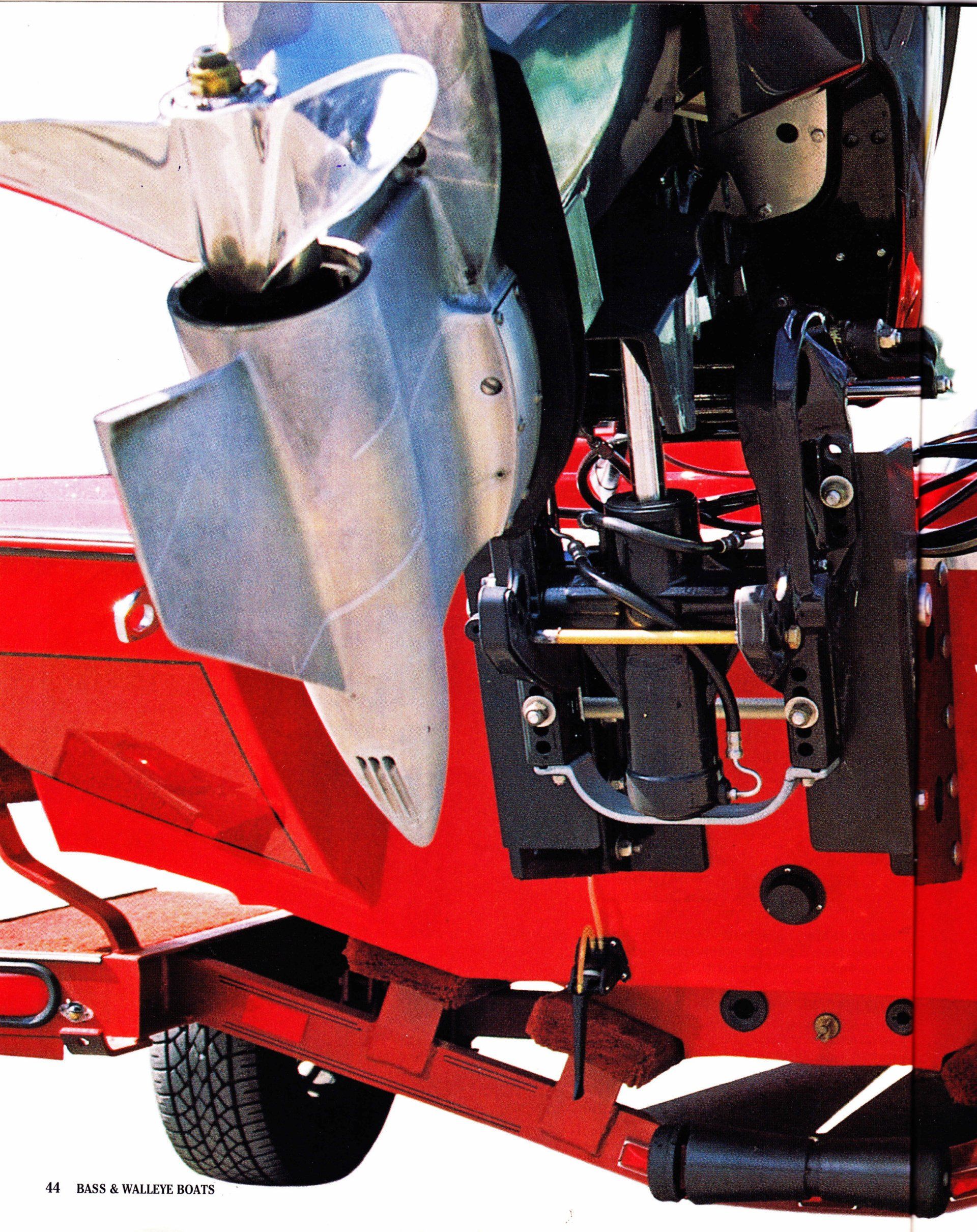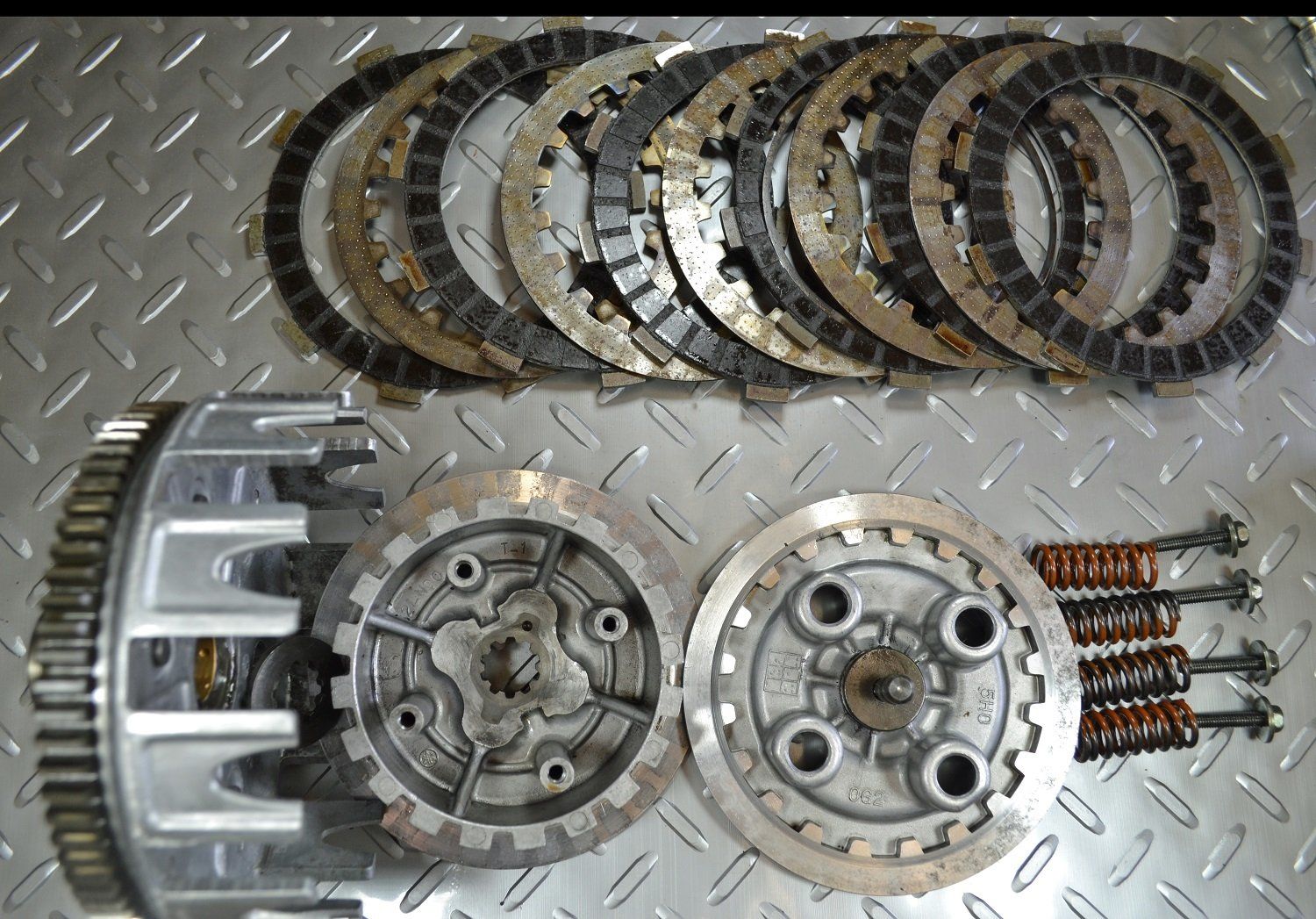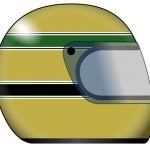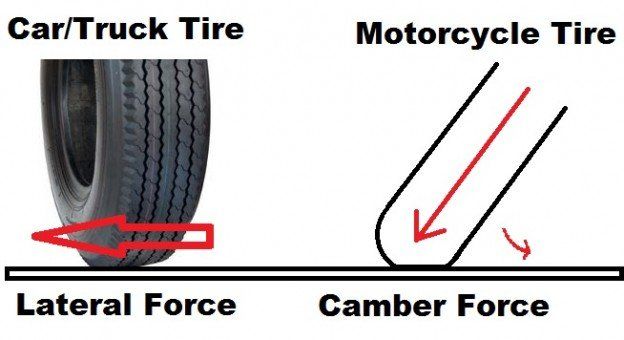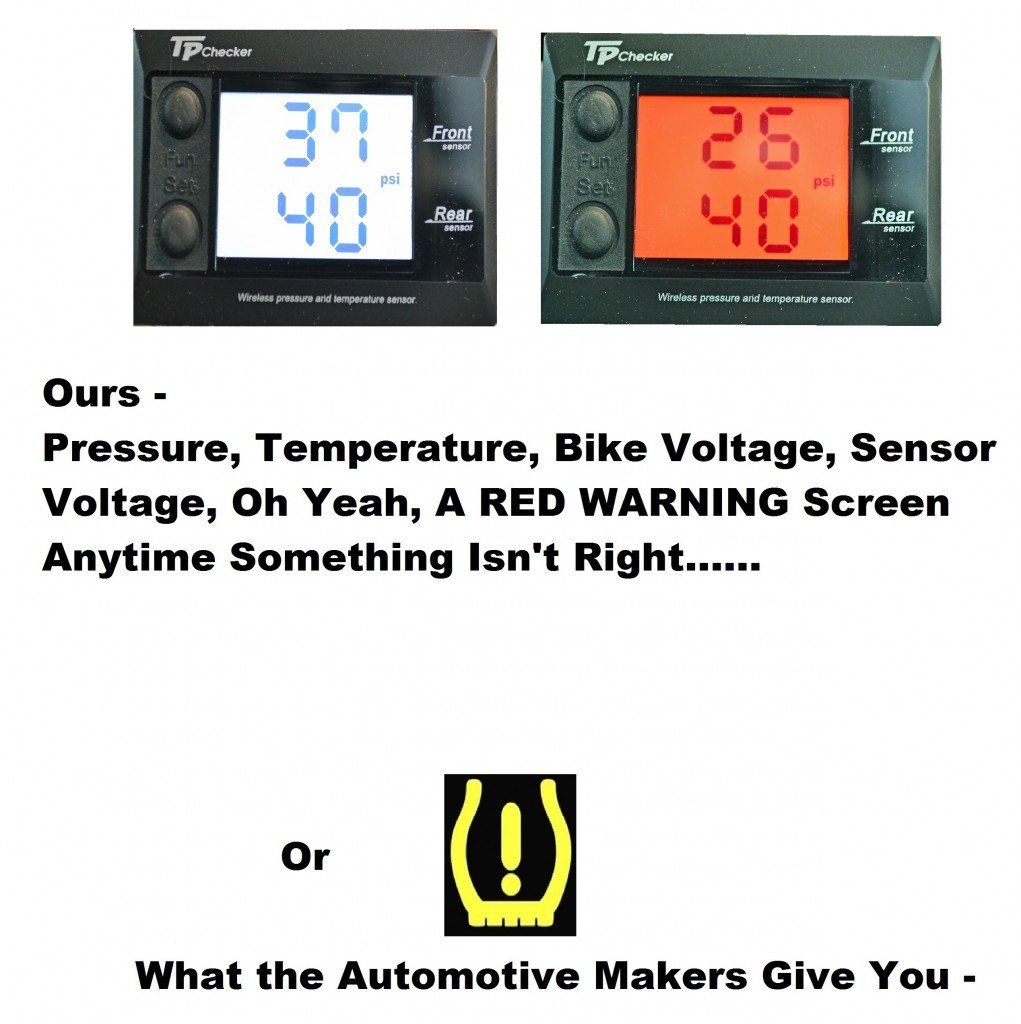While motorcycle tires have the same job as those on your car or truck, they do it very differently. Our motorcycles lean to turn thereby moving the center of gravity inward so the weight and inertia are transferred to the road at an angle, or “Camber Force”. Your car/truck tire supports the weight downward and the inertia to the side with “Lateral Force“. The job and method are as different as the shape of the two tires.
Motorcycle Tire Facts – Rubber Around The Rim
Tires. Wow.
Over the last several weeks, I’ve read hundreds of pages researching tire technology and more specifically, the Laws of Physics that explain the What and the Why tires work – or don’t. This research will help prepare me for the bike shows and events that I’ll be attending this year. I enjoy talking with customers about my products and being able to give the science behind the solutions, so the research is both necessary and fun. The images were done using Paint on my laptop.Why this Tire Stuff? It’s important. I started RRR because I wanted to make a difference – to build, sell, and market what is the best Roadside/Trailside tool roll kit available. An abbreviation for Repair, Roll (roll your tools), and Ride, RRR Tool Solutions still makes and distributes it’s core product – the 46 Piece Adventure Tool Roll Kit, but we’ve got a lot more. Read on and let’s get into what I know about Tire Maintenance and TPMS. When you’re done reading, have a look at our other pages, products, articles, facts, stories, and send your comments.
The rounded shape of the motorcycle tire serves two important functions –
First it is designed for the lean – keeping it’s contact patch and shape constant throughout changing lean angles.
Second is the movement right and left that a tire leaned over is going to give. I used one of my 170/60/17 tires to demonstrate. Measured at the very center of the tire, the measurement around this tire was 78.6″. So in one revolution, the bike would move 78.6″. Now, measured at the sides, the same tire has a measurement of 66″ -a full 12.6″ difference. Looking at the ice cream cone, we know that when rolled on a table or countertop, the cone will move sharply left or right depending on which way we roll it. Let’s get on the bike now and get it leaned sharply into a right-handed turn – the center of the tire is 78.6″ and the edge of the tire is 66″, so our entire bike is going to move right with every turn. The round shape of the motorcycle tire is what makes this side movement front and rear possible and unlike our car/truck tire that has to point and roll in the direction of the turn.
How do we insure that our tires keep their shape?
Correct Tire Pressure. How do we monitor and assure ourselves that our tires can do their job? TPMS
This roundness is great, right? Well for turning, Yes. For mileage and longevity, No. Because our motorcycle tire is rounded, the amount of tire in contact with the road is relatively small when going straight as compared to a car/truck tire of the same total width.
Ok, so we learned why the shapes are different and now realize that the smaller running surface of the motorcycle tire is why our mileage is less. It doesn’t stop here though. The rubber compounds used in motorcycle tires are often much softer/stickier than those of cars/trucks. Softer/stickier tires raise the coefficient of drag by increasing the amount of surface contact. They do this by deforming to the road surface irregularities easier, faster, and with less force required than harder rubber. The downside is that softer rubber tears and shreds itself away as it moves across those road surfaces. The more friction, the more tearing and shredding of the rubber.
Heat and Soft Rubber also have a direct relationship. Cold rubber will be harder, less sticky, and less willing to conform to the road surface irregularities thus less grip. Hot rubber is too soft and looses it’s ability to hold onto road surfaces as it should and must do. Tire Flex is the major source of heat in a tire used in normal conditions. The flexing will generate heat through the carcass movements. Tire manufacturing companies have spent years developing and testing different tire compounds and construction methods. These tires are made and designed to work at very precise pressures.
What can we do to check and maintain our tires?
TPMS. How do we monitor our pressure and tire temperatures? TPMS
Rubber is an organic substance so a tire starts decomposing the day it’s made. Time, Sunlight, and Heat all take their toll on our tires. Whether they’re on the motorcycle or in storage, the moisture naturally present in the rubber when new out-gases and the tire turns drier, harder, and closer to compost every day. As they dry and age, tires become brittle and less able to handle the stresses of flexing and use. Be aware of this and look at the dates carefully before you jump on that great close-out pricing. Fresh Rubber, proper sizing, and proper inflation are key to safely enjoying our sport.

